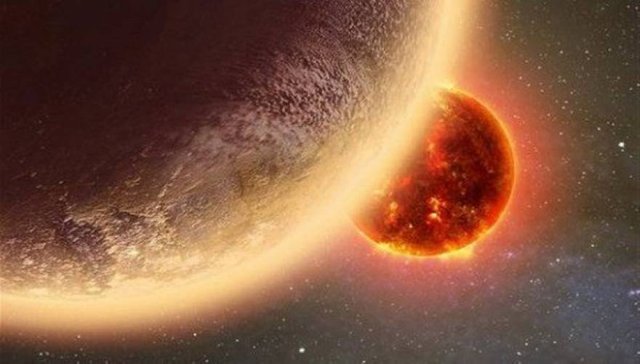Red Dwarfs
Our universe has so many stars that, according to astronomers' estimates, we would need 5 times more grains of sand than there are on earth. This number of course includes all stars of all galaxies in the universe known to us. But these are only the stars we can see. There are also stars that we cannot see with the naked eye: the so-called red dwarfs.
Red dwarfs are stars that could not be completely become a real star like our one, because the nuclear fusion of hydrogen to helium takes place only slowly with the red dwarves, as with normal suns. Therefore, they have a very long lifetime of 20 billion to 1 trillion years. Because red dwarfs live so long, and new ones are created again and again, their number is large. About 70 percent of all stars of the Milky Way are red dwarfs. Due to their low brightness, however, they are difficult to observe and can only be observed close suns.
Red dwarfs are main sequence stars and belong to the spectral class M. They also have only 0.08 to 0.06 solar masses and are therefore much smaller than our sun. Since they radiate almost only in the red and infrared range, they shine reddish. Due to their small size and their low surface temperature of 2,200 to 3,800 kelvin they shine very weakly. Therefore red dwarfs cannot be seen with the naked eye.
Inside, red dwarfs are not really stable, therefore many of them have high coronal activities that occur at irregular intervals, the so-called flares. These flares can extinguish entire atmospheres in nearby planets and thus make them uninhabitable. In addition, red dwarfs often have spots, which reduces the radiating temperature. This could cause a planet to freeze to death.
If the hydrogen of a red dwarf is consumed over time, it shrinks very slowly. This can last from millions to billions of years. Due to the resulting small mass, the increase in temperature in the core is not sufficient to ignite a helium fusion. This is one of the reasons known to us why red dwarfs do not turn into red giant stars. And instead, they colabate to white dwarfs, which consist mainly of helium and consist barely of heavy elements.
We could spot a few red dwarfs hosting a planetary system. Some planets are even in the habitable zone but since red dwarfs live a wild life, the estimation of life on the exoplanets is very low.






Wow space is so cool
Posted using Partiko Android
#great #information post for astronomy . i learn new things from your post . your great post is really helpful for us . thank you @oendertuerk
The World is full of nice people. If you can't find one, be one.
Wow I will try to be one.
Posted using Partiko Android
We are talking about all these stuff but our descendants will see them firsthand. I wish I was born when humans are capable of interstellar travel.
It's so beautiful, I wish I could go to space someday
Posted using Partiko Android
Hello, I just read your article and I found it so helpful. I'm asking you for permission. I'm thinking about running a science-related blog in my own language, Bengali. I wish to use your article by translating in my language. Will you permit me to do so? I'll be glad. It can help people who can't read English.
Hi @chemistpsycho, sure, you can do it :)
Hi, @oendertuerk!
You just got a 1.33% upvote from SteemPlus!
To get higher upvotes, earn more SteemPlus Points (SPP). On your Steemit wallet, check your SPP balance and click on "How to earn SPP?" to find out all the ways to earn.
If you're not using SteemPlus yet, please check our last posts in here to see the many ways in which SteemPlus can improve your Steem experience on Steemit and Busy.
Hi @oendertuerk!
Your post was upvoted by @steem-ua, new Steem dApp, using UserAuthority for algorithmic post curation!
Your UA account score is currently 4.895 which ranks you at #1244 across all Steem accounts.
Your rank has improved 55 places in the last three days (old rank 1299).
In our last Algorithmic Curation Round, consisting of 182 contributions, your post is ranked at #21.
Evaluation of your UA score:
Feel free to join our @steem-ua Discord server